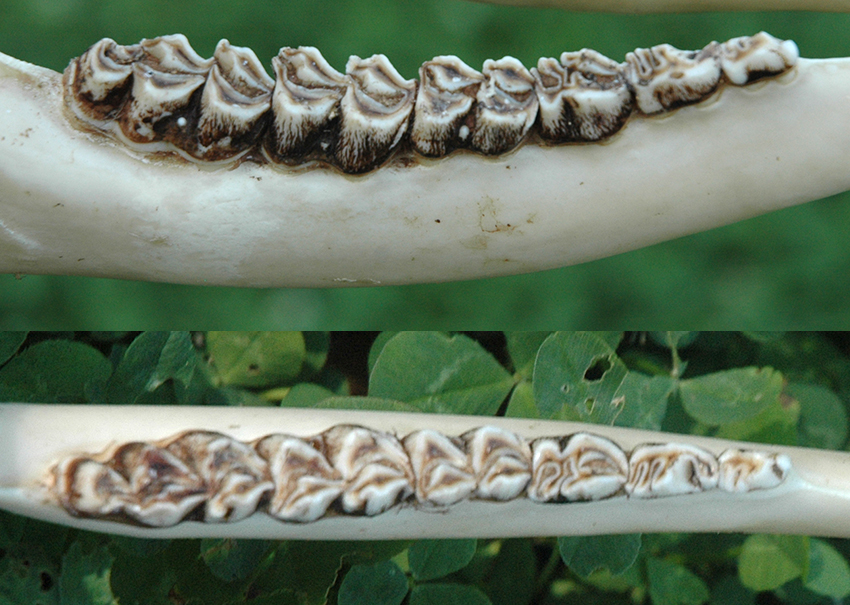One of the most important skills for any deer manager involved in a Quality Deer Management (QDM) program is the ability to age deer after harvest.
Without knowing the deer’s age it is unfair to compare deer by body weight, antler size or reproductive output. It is also important to know the age structure of your deer herd to set realistic goals and expectations, and to have some measure of fawn survival (or predation).
The most commonly used technique to age deer after harvest is the tooth replacement and wear technique. As the name implies, this technique involves two processes: tooth replacement (simply the replacement of teeth over time as with humans) and tooth wear (the erosion of teeth over time).
This is an excellent aging technique as it is free and can be performed anywhere, but it requires a jawbone. Numerous hunters discard the jawbone from their deer because they do not want to mess with it or the expense of mailing it to someone qualified to estimate age. Others want the jawbone from their deer but worry their taxidermist mixed it up with another. If you fall in to one of these group, no worries. Now you can still estimate the age of your deer by snapping two quick pictures.
Virtually all hunters have access to a cell phone with a built-in camera or a small digital camera, and by taking two shots of a deer’s jawbone you (or a trained ager) can estimate age using the tooth replacement and wear technique nearly as accurately as having the actual jawbone.
Photo 1: Shoot straight in to the cheek side of the jawbone. This allows an ager to determine with nearly perfect accuracy whether the deer is less than one year (a fawn), 1.5 years, or at least 2.5 years old.

If you are photographing a deer jawbone so the jawbone can be aged later based on the photos, be sure to take these two angles.
Photo 2: Shoot straight down on the jawbone. This allows an ager to view the width of dentine (brown) in relation to the width of enamel (white) on the molars. As deer age they expose more dentine on the molars, and this view allows an ager to estimate whether the deer is most likely 2.5, 3.5, 4.5 years or older.
The jawbone in the diagram above has been removed from the deer, but you can take similar photos without removing them. Simply cut back through the corner of the deer’s mouth and cut the cheek away to expose the jawbone from the side view. Then open the deer’s mouth as wide as possible for Photo 2.
You can acquire the necessary photos in less than two minutes by cutting the cheek away from the jaw or in less than five minutes by actually removing the jawbone. The information gained from the jawbone is a huge return on your time investment for collecting it.
How to Remove a Jawbone
We have also created video guides to aging jawbones:
